#8 Demand of IOT Based Predictive maintenance in future times
Predictive maintenance is the application of machine learning algorithms in industrial machine so that they have predictive capability. Predictive maintenance has always focused on how to predict when certain conditions are going to occur and when machines will fail.

Page Contents
What is Predictive Maintenance ?
In very basic terms, Predictive maintenance is the application of machine learning algorithms in industrial machine so that they have predictive capability. Predictive maintenance has always focused on how to predict when certain conditions are going to occur and when machines will fail.
With the advancement in the field of machine learning & ability to do it at a large scale, we have now many use case where we can apply it. It is not just reserved for a few organization any more. It is now available to all those industries which have a heavy use of assets or machines.
What is the Need of Predictive maintenance ?
The interest to have predictive capabilities is growing in the organization is growing day by day because:
- Manufacturers need to know when a machine is about to fail so they can better plan for maintenance. For example, as a manufacturer, you might have a machine that is sensitive to various temperature, velocity, or pressure changes. When these changes occur, they might indicate a failure.
- With predictive maintenance in place you can do a load balancing among your machineries. For e.g. You have 100’s of motor installed in your plant, only 20% of them are running in peak times, With relevant amount of statistical model you can plan so that all motor run in equal amount.
- Cost reduction: Since you can plan in advance, you do not have to pay yearly maintenance or reactive maintained cost. Some machines or asset does not need maintenance every year but based on amount of usage but industries still pays annual AMC to the vendors. This cost could be reduced.
Evolution of Maintenance
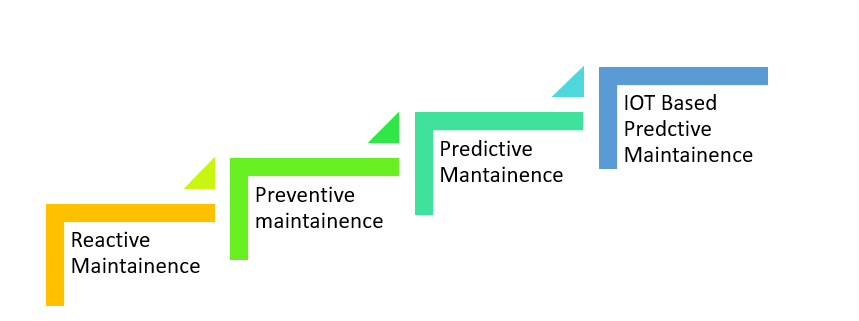
Reactive maintenance
In this type people used to fix any trouble in machine only when its is broke down.
Preventative maintenance
In this people used to do maintenance on a fixed schedule basis. Similar to your car service annually based on running km say 10000 km or every 12 months. The key here is you define a certain threshold.
Problem here was
- you often end maintaining the machines which doesn’t require any maintaining or you would find things break down before the schedule threshold.
- Also, Manufactures took this type of maintenance for their advantage, they set such limits so that they can limit the risk & increase the profit by the warranty clauses.
- Quite often assets are maintained on a higher frequency than what is required & this would create maintenance induced failures in machinery.
Manual predictive maintenance
AS technology advancement took place, engineers started to take measurement of parameters affecting the condition of an asset. They used vibration monitors or ultrasonic devices or other means. You created a predictive maintenance capability but it was still manual. This is present in our world from sometime but it often required operator going out and taking measurement. They have to physically go out and take readings, capture that data and plot it out.
It takes hours of effort of creating a spreadsheet, then on basis of their analysis they would come up with predictive maintenance schedule. It was a great idea but execution was done on an adhoc basis.
IoT-based predictive maintenance (where we are right now)
With IOT in place the way we look at predictive maintenance has changed, you can now monitor your assets in real time at a very low cost that sends data to an algorithm on a continuous basis. Then algorithm can take a decision whether there is something wrong happening with the machine or not. Also predict when the maintenance needs to be done.
That is where predictive maintenance is going now with what we call IoT-based predictive maintenance.
You can then schedule maintenance based on that data.
How to get started ?
To get started you need to follow some below key points:
- Start analyzing your assets from parameter point of view, means which parameter affect the health of your machine. E.g. identify key variables for a battery, we get temperature & voltage.
- Identify the sensors which are capable of monitoring those variables. In our case we take temperature sensor and voltage sensors.
- Identify your gateway to aggregate the sensor data.
- Select your IOT to platform to collect the data and analyze it.
- Choose your machine learning algorithm as per your use case.
Prediction, sometimes referred to as inference, requires machine-learning (ML) models based on large amounts of data for each component of the system. The model is based on a specified algorithm that represents the relationships between the values in the training data. You use these ML models to evaluate new data from the manufacturing system in near real-time. A predicted failure exists when the evaluation of the new data with the ML model indicates there is a statistical match with a piece of equipment in the system.
Lets go into more depth of technology by understanding reference architecture of an IOT.
IOT Based – Reference architecture
- Sensors – they process data from all the machines or asset to process further.
- Field Gateway – They act as aggregators for all the sensor data and deposit them onto the cloud environment.
- Cloud Gateway – Process those data and pass it to streaming data processors as the data velocity is high you need specialized streamers.
- Data Lakes – Streaming data is now stored into lakes as transactional data.
- Big Data Warehouses – The data stores where all the machine learning operations will be executed.
- Machine Learning Algorithms – They continuously run on big data warehouses, if desired conditions are not met failure models are called.
- Control Application – They do two things if there failure module is activated, first they trigger command to sensor to stop or hold working & second they notify maintenance system about the need of maintenance or failure.
- Data Analytics – They are graphical or tabular dashboards for providing insights in the big data warehouses.
- User Applications – Frontend application for users or operators.
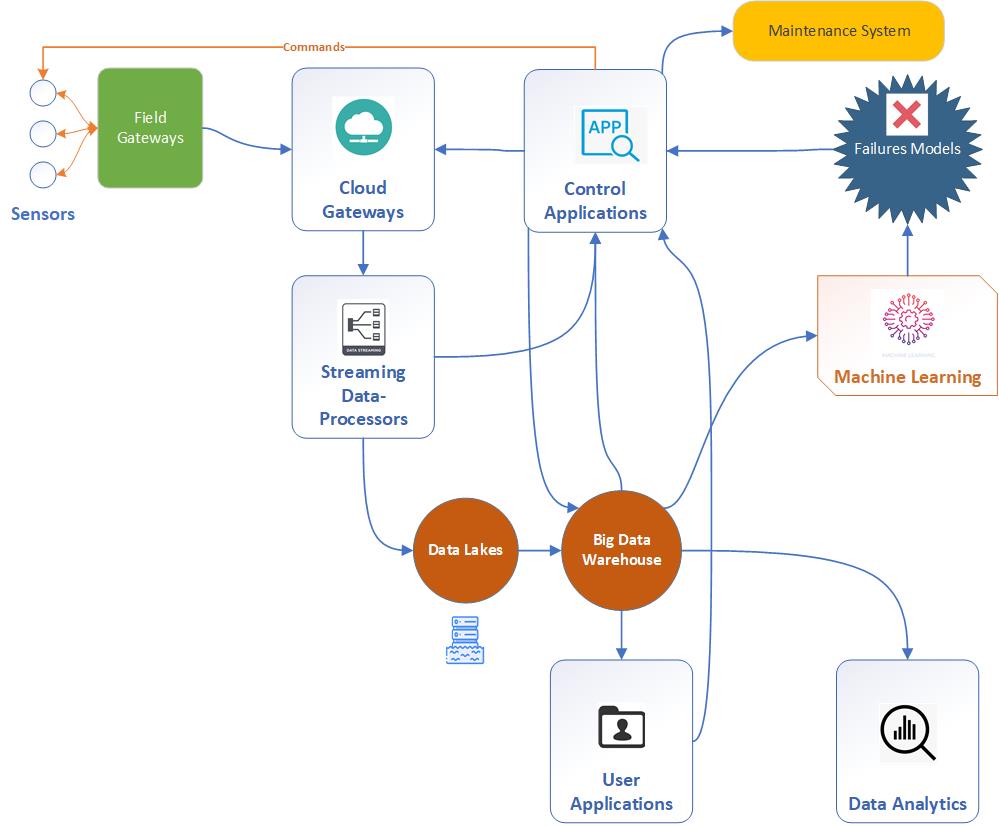
Implementing reference architecture using AWS Technology Stack
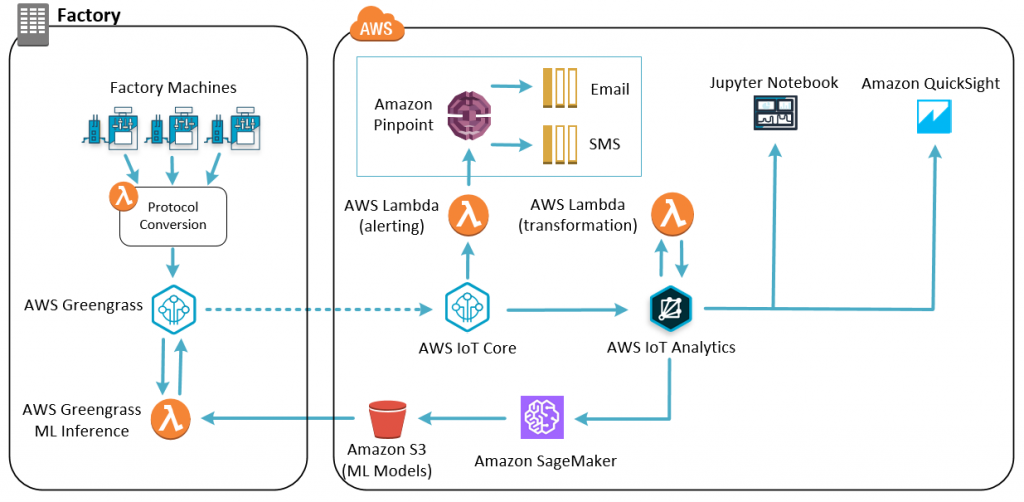
Application in varied industries
Predictive maintenance by industries
Engineers across industries are now considering application of predictive maintenance. Teknonauts trying to list some possible applications from manufactures point of view.
Discrete manufacturing
Major discrete manufacturers are using predictive maintenance based on IoT to monitor, for example, the health of spindles in milling machines. They are prone to breaking, while their repair is expensive. An IoT-based predictive maintenance solution can help to predict potential damage by collecting data from ultrasonic and vibration sensors attached to the spindle.
Process manufacturing
In process manufacturing, pulp processing and paper manufacturing companies leverage IIoT to monitor the state of paper-making machines. For example, Maastricht Mill equipped their press rolls with temperature and vibration sensors and rolled out a cloud-based predictive maintenance solution to predict damages of bearings and gears.
Scheduling maintenance for a press roll based on a cover failure prediction
Another example is the steel industry. Steel plants have multiple furnaces that use water cooling panels to control temperature. Leakages in the panels may cause safety issues and production losses. An IoT-based predictive maintenance solution can help detect anomalies and carry out a root cause analysis, preventing production delays and equipment failures.
Oil and gas
Oil & gas companies particularly benefit from applying predictive maintenance solutions. Physical inspection of oil & gas production equipment requires personnel to go into hazardous environment to examine the equipment, which in some cases is not feasible. IoT-based predictive maintenance allows oil & gas companies to identify potential failures and increase the production of highly critical assets.
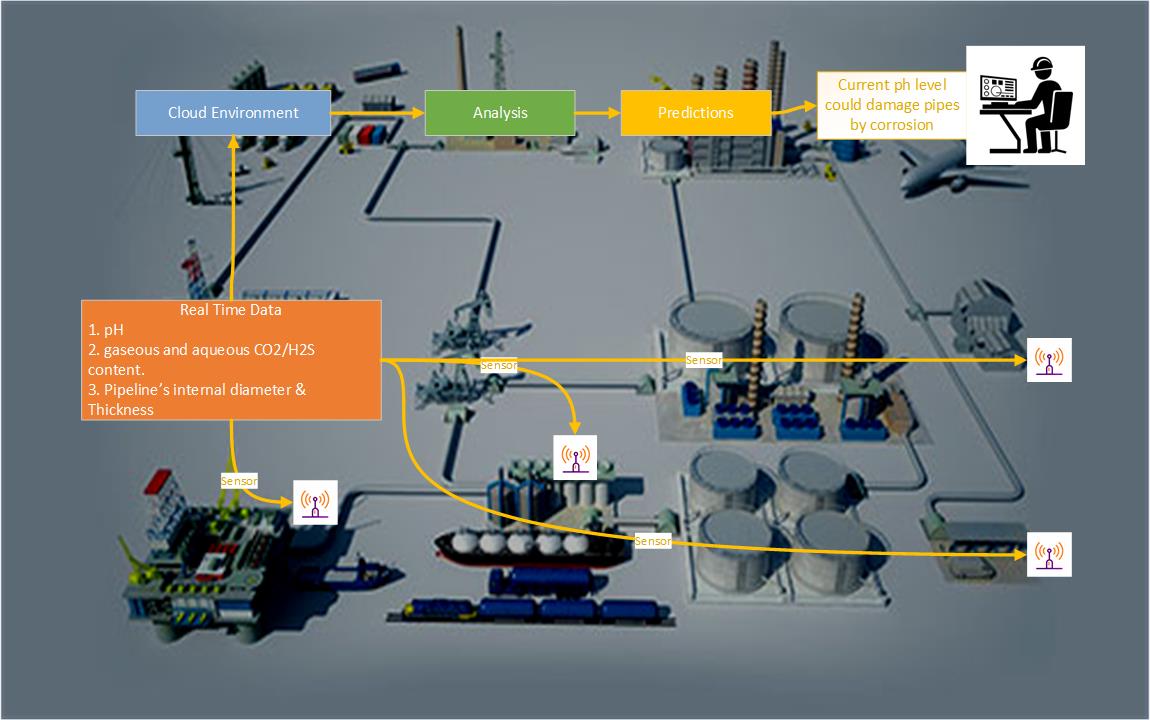
Electric power industry
Electric power plants have to ensure reliable power supply, particularly, during the periods of peak demand. An IoT-based maintenance solution can help to ensure uninterrupted power generation and detect evolving flaws in a gas/wind/steam turbine’s rotating components. For that, a turbine gets equipped with vibration sensors. The data collected by sensors is relayed to the cloud and run through ML algorithms to determine how each turbine performs.
Scheduling maintenance for a wind turbine based on a main bearing failure prediction
Railways
Railway companies apply IoT-based predictive maintenance to ensure the rails and the rolling stock are in proper condition. The solution helps to improve safety, reliability and velocity of the rolling stock, as well as reduce train delays caused by equipment malfunctions.
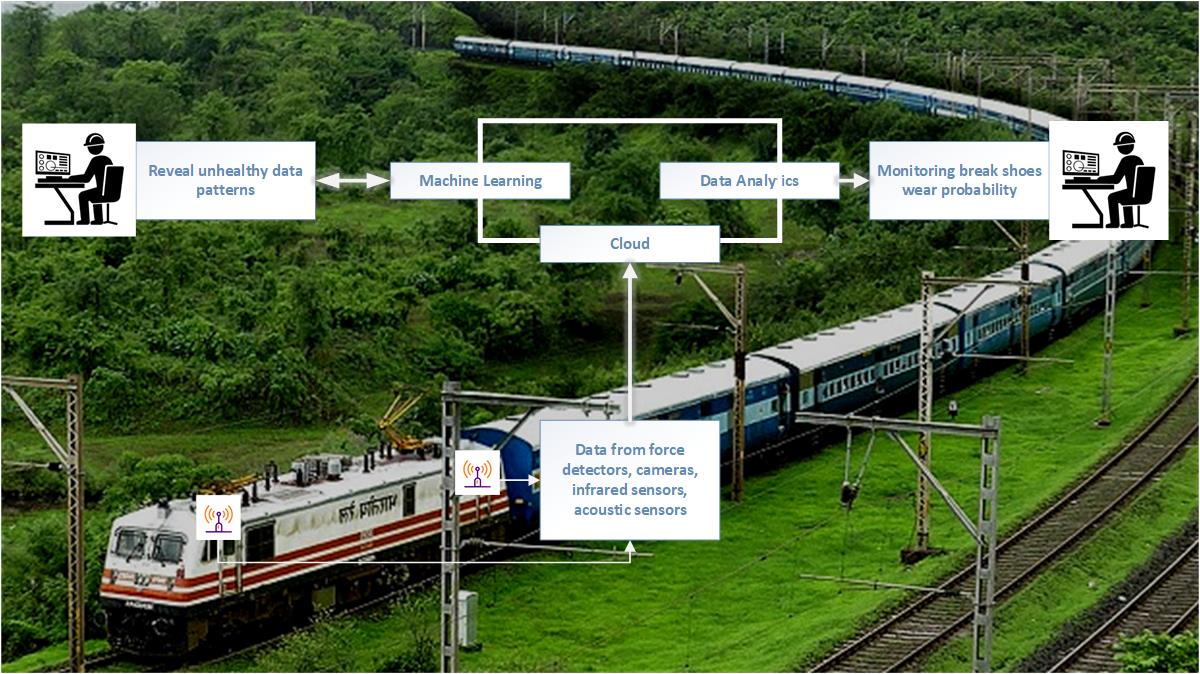
Construction
In construction, predictive maintenance is applied to monitor the state of heavy machinery, e.g. excavators, bulldozers, loaders, lifts, etc. Sensors can be attached to a machine to monitor transmission and brake temperature, engine RPM, tire pressure, fuel consumption and other values. The cloud identifies potential problems with exhaust after-treatment systems, as well as rotating and static components damages.
Conclusion
IoT-based predictive maintenance improves equipment’s life, helps to eliminate as much as 30 percent of the time-based maintenance routine, and reduces equipment downtime by 50 percent. For a mature and reliable predictive maintenance solution. Its better to start thinking now of it otherwise you would lack behind.
Do follow our Youtube channel for latest videos.
Explore more at Teknonauts

Ashish is technology freak with around 11+ years of experience in IT Landscape. He started his journey as a device driver programmer in 2010. From that point he has evolved as a Mobility and IOT Architect, he completed his M.Tech from BITS Pilani as System Architect. He is working as Principal Architect at Oracle currently.







Very good article. I am going through some of these issues as well.. Starlin Hewitt Xenos
Thanks for the feedbak starlin. Do subscribe our newsletter and our youtube channel.
Thanks for promoting our site. Looking forward to serve all the technology enthusiast in best and effective manner.
Wonderful article! We will be linking to this particularly great article on our website. Keep up the good writing. Cornelia Geordie Celin
Thanks for the appreciation, Cornelia. Please follow is to get latest blogs and news.
Howdy are using WordPress for your blog platform?
I’m new to the blog world but I’m trying to get started and create my own. Do you need
any html coding knowledge to make your own blog? Any help would be really
appreciated!
Thanks Kremi, Yes you can start with wordpress and you don’t need HTML coding knowledge. You can use ready plugins and ready theme to start of your own.